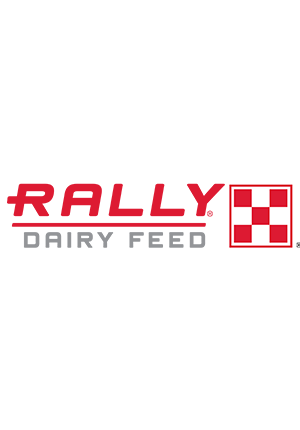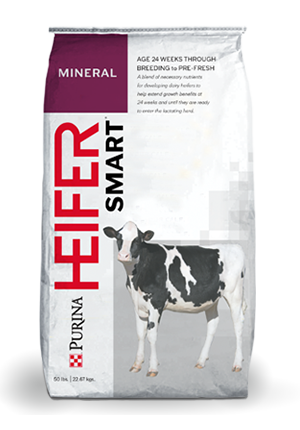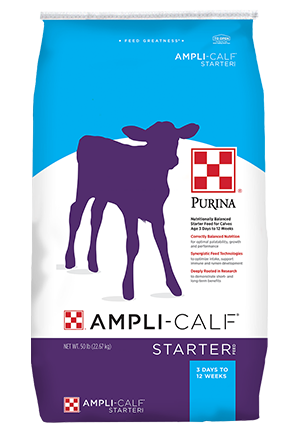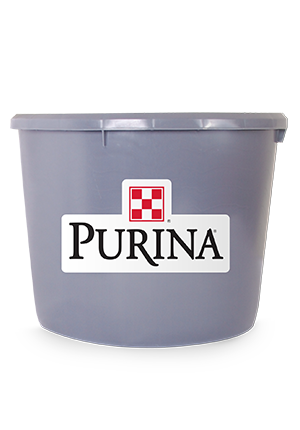
Mitigating the Risks of Molds and Mycotoxins
Cow : Management
Trucks running in and out of the farm, tractors packing and a smell we love: It’s silage harvest season. As we enter this time, it’s important to ensure proper silage management to reduce the impact of mold and mycotoxin contamination in your rations. Mold growth and the production of mycotoxins are typically associated with extremes in weather conditions leading to plant stress or hydration of feedstuffs, poor storage practices, feedstuff quality and feeding conditions.1
Mycotoxins are toxic secondary metabolites, produced by molds causing a disease called a mycotoxicosis in cattle. When exposed, cattle can experience liver or kidney toxicity as well as central nervous system and reproductive effects. The economic impacts of mycotoxin contamination due to crop loss, livestock productivity and regulatory programs are estimated to cost U.S. agriculture $1.4 billion on average.2
There are three types of molds that commonly produce mycotoxins: Aspergillus, Fusarium and Penicillium. Each of the mycotoxins produced can have detrimental impacts to your cattle. See Table 1.
Table 1
To learn more, talk with your Purina dairy feed representative or purinamills.com/dairy-feed.
References:
1 Smith, G. 2013. “Effects of mycotoxins in cattle.” Proceedings of the North American Veterinary Conference: Large animal edition.” Accessed online: https://www.vetfolio.com/learn/article/effects-of-mycotoxins-in-cattle.
2 Council for Agricultural Science and Technology. 2003. “Mycotoxins: Risks in plant animal and human systems.” Task Force Report No. 139. Ames, Iowa.
Molds vs. Mycotoxins
Molds are fungi that occur commonly in feedstuffs, including roughages or concentrates. They are present throughout the environment and can occur at various stages throughout the field and storage. Field mold spores enter the plant through roots, through silks during pollination or because of plant damage from insects or environmental injury such as wind or hail. Other fungi grow more preferentially when feedstuffs are in storage. There are more than 1.5 million species of mold worldwide. However, only about 100,000 have been identified, and only a few of these are toxigenic molds, which may produce harmful toxic substances called mycotoxins.Mycotoxins are toxic secondary metabolites, produced by molds causing a disease called a mycotoxicosis in cattle. When exposed, cattle can experience liver or kidney toxicity as well as central nervous system and reproductive effects. The economic impacts of mycotoxin contamination due to crop loss, livestock productivity and regulatory programs are estimated to cost U.S. agriculture $1.4 billion on average.2
There are three types of molds that commonly produce mycotoxins: Aspergillus, Fusarium and Penicillium. Each of the mycotoxins produced can have detrimental impacts to your cattle. See Table 1.
Table 1
| Mold type | Mycotoxin produced | Symptoms |
| Aspergillus | Aflatoxin | Decreased growth, reduced feed efficiency, liver damage, diarrhea, depression, and immune suppression. |
| Fusarium | Deoxynivalenol (DON, Vomitoxin) | Reduced feed intake, growth rate and milk production; vomiting in pigs; reproductive failure; and altered immune function. |
| Zearalenone | Vaginitis, vaginal secretions, poor reproductive performance, and mammary gland enlargement in virgin heifers. | |
| T2 | Feed refusal, gastroenteritis, intestinal hemorrhage, bloody feces, missed estrus, decreased production and immune suppression. | |
| Fumonisin | Reduced feed consumption and liver damage. | |
| Penicillium | PR toxin | Reduced intake, rumen stasis, intestinal irritation, abortion and retained placenta in dairy cattle. |
| Ochrotoxin | Kidney toxin: toxic to calves, less toxic to mature (functional) ruminants, but has been implicated in deaths. |
Mitigating the risk
Good management practices are the first step to help mitigate the severity of issues associated with moldy feed and mycotoxin problems. These may include:- Selecting seed varieties resistant to fungal diseases or insect damage such as Bt hybrids.
- Implementing crop rotation strategies.
- Adding a fungicide application to promote plant health and disease resistance.
- Cleaning out bins, silos and storage facilities to help eliminate sources of mold inoculation.
- Regularly checking stored feeds for signs of heating or molding and using preservatives such as organic acids as necessary.
- Use quality bacterial inoculants and silage management to ensure optimal fermentation.
- Diluting affected feedstuffs with clean feeds to reduce the impact.
- Increase dietary protein, energy, minerals e.g., Cu, Mn, Zn, Se and vitamins A, E, B1 to offset losses associated with challenges to gut health.
- Adsorbents, dietary yeast and direct-fed microbials may support rumen health and dry matter intake during a mycotoxin challenge.
To learn more, talk with your Purina dairy feed representative or purinamills.com/dairy-feed.
References:
1 Smith, G. 2013. “Effects of mycotoxins in cattle.” Proceedings of the North American Veterinary Conference: Large animal edition.” Accessed online: https://www.vetfolio.com/learn/article/effects-of-mycotoxins-in-cattle.
2 Council for Agricultural Science and Technology. 2003. “Mycotoxins: Risks in plant animal and human systems.” Task Force Report No. 139. Ames, Iowa.





